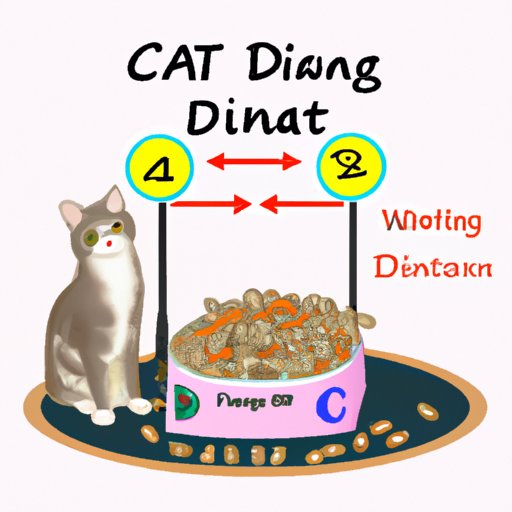
Introduction
As a cat owner, it can be concerning to notice your feline friend losing weight. Whether the reason is due to illness or simply being a picky eater, having an underweight cat can be alarming. However, with the right approach, it is possible to help your cat gain a healthy amount of weight and promote their overall wellbeing.
The purpose of this article is to provide cat owners with practical and effective tips on how to put weight on a cat. We will discuss various topics, including understanding the reason behind the weight loss, reviewing your cat’s diet plan, offering grazing rights, keeping your cat active, working on reducing stress, considering supplements and high-calorie treats, and monitoring the weight gain. With this comprehensive guide, you can help your underweight cat thrive.
Understanding the Reason Behind the Weight Loss
Before diving into how to put weight on a cat, it is essential to understand the root cause of the weight loss. There are numerous reasons why a cat may lose weight, including dental problems, chronic diseases, parasites, and stress. Identifying the underlying cause is crucial to address the issue effectively.
If you notice your cat losing weight, it is important to schedule a visit with your veterinarian. A veterinarian can diagnose the cause of the weight loss and tailor a treatment plan accordingly. Once you have a diagnosis and treatment plan, you can then focus on ways to put weight on your cat.
Review Your Cat’s Diet Plan
A balanced and complete diet is essential for a cat’s overall health and wellbeing. If your cat has lost weight due to being a picky eater or not being interested in food, it may be time to revisit their diet plan.
Start by providing your cat with high-quality, protein-rich food that is appropriate to their age and activity level. If you are unsure what type of food is best for your cat, consult your veterinarian for recommendations. Additionally, you may need to adjust your cat’s feeding schedule or portion sizes to increase their caloric intake. However, caution is essential not to overfeed your cat, as this can lead to other health problems.
Offer Grazing Rights
Another way to encourage weight gain in cats is to allow them to graze on food throughout the day. Cats are natural grazers and tend to eat multiple small meals throughout the day rather than one or two large meals. Providing access to dry food throughout the day can help increase their caloric intake without overfeeding.
However, it is essential to monitor portion sizes and ensure that your cat is not overeating. Feeding your cat from puzzle feeders or providing them with food dispensing toys can help control portion sizes and stimulate their natural hunting instincts.
Keep Your Cat Active
Exercise and playtime are crucial for cats, not only to prevent weight loss but also to promote their overall wellbeing. Encourage your cat to be more active by providing them with toys, scratching posts, and interactive games. You could also introduce them to new activities like agility training. Just like with humans, physical activity helps cats maintain a healthy weight and promotes their physical and mental health.
Work on Reducing Stress
Stress is another significant factor that can contribute to weight loss in cats. A stressful environment, changes in routine, and new pets or visitors in the home can all cause cats to stop eating or not enough eating. To reduce stress, provide your cat with comfortable bedding, hiding spots, and enough litter boxes. Creating a calm and stable environment will help reduce your cat’s stress levels and make them feel more relaxed and comfortable, promoting their willingness to eat.
Consider Supplements and High-Calorie Treats
If your cat needs an extra boost, consider incorporating nourishing supplements like fish oil and digestive enzymes into their diet. Both will help support your cat’s overall health and increase their calorie intake naturally. Additionally, high-calorie treats like meat-based treats containing chicken or salmon can provide a healthy bump in calories without overfeeding your cat.
Monitor the Weight Gain
Once you’ve implemented some of these changes to help your cat gain weight, it is crucial to monitor their progress. Weigh your cat weekly and log their progress in a notebook or a weight tracking app. This will allow you to adjust their diet plan accordingly and ensure that they are gaining weight at a healthy rate. However, again, make sure you are not overfeeding your cat. Consistency is key.
Conclusion
Putting weight on a cat can be a challenging and frustrating task, but with these tips, it does not have to be. Remember to work closely with your veterinarian and be patient throughout the process. By reviewing your cat’s diet plan, offering grazing rights, keeping your cat active, reducing stress, considering supplements and high-calorie treats, and regularly monitoring their weight gain, you can help your cat gain weight safely and healthily. Ups and downs during the weight gain process are common and normal, and with patience and persistence, your cat will soon reach their ideal weight and be happier and healthier for it.





